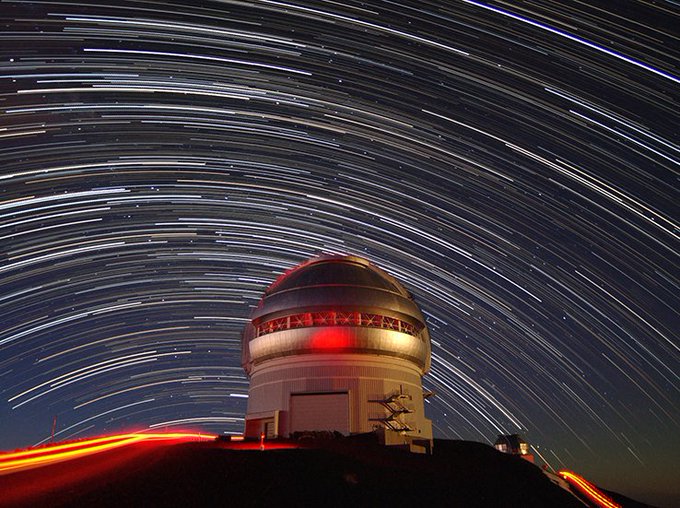 T.H.E.M.
¨We believe in the judgment; we believe this first judgment will take place as God revealed, in America...¨
T.H.E.M.
¨We believe in the judgment; we believe this first judgment will take place as God revealed, in America...¨
 T.H.E.M.
¨We believe in justice for all, whether in God or not; we believe as others, that we are due equal justice as human beings.¨
T.H.E.M.
¨We believe in justice for all, whether in God or not; we believe as others, that we are due equal justice as human beings.¨
Frenzy-Feeding Supermassive Black Hole Spotted Producing ‘Crazy Powerful’ Winds Never Seen Before

© Flickr / European Southern ObservatoryTECH
A team of astronomers had returned to observe an earlier discovered quasar after developing new methodology and resorting to a telescope sitting atop dormant volcano Maunakea in Hawaii, only to make a stunning revelation.
Scientists recently made a remarkable discovery as they detected massive winds spurting forth from a quasar they were observing, according to research published on 1 March in the Astrophysical Journal.
The powerful thrust of the registered gusts was of a magnitude never seen previously.
A quasar is a supermassive black hole which is in a feeding frenzy, accelerating particles it cannot absorb to such impressive velocity that they reach nearly the speed of light, shooting out from the luminous space object in jet-like steams. The process is also often accompanied by winds permeated through the surrounding galaxy.
“While high-velocity winds have previously been observed in quasars, these have been thin and wispy, carrying only a relatively small amount of mass,” said Sarah Gallagher, an astronomer at Western University in Canada and lead author on the new research, in a University statement.
Elaborating further on the research, entitled “Discovery of a Remarkably Powerful Broad Absorption-line Quasar Outflow in SDSS J135246.37+423923.5”, the astronomer added:
“The outflow from this quasar, in comparison, sweeps along a tremendous amount of mass at incredible speeds. This wind is crazy powerful, and we don’t know how the quasar can launch something so substantial.”
The quasar that aided the astronomers in their discovery, dubbed SDSS J135246.37+423923.5, is produced by a supermassive black hole boasting a mass more than 8 billion times that of the Sun, according to the team.

NASA/CXC/UNIVERSITY OF COLORADO/J. COMERFORD ET AL.Supermassive Black Hole Burping
Originally discovered by Sloan Digital Sky Survey, a project that maps the universe, the astronomers had resumed a study of the object with the help of the Gemini North telescope strategically placed on dormant volcano Maunakea in Hawaii.

National Science Foundation✔@NSF
DYK @NSF is on @instagram? Follow http://instagram.com/nsfgov/ for beautiful images like this one of NSF’s Gemini North telescope in Hawaii.

507:14 AM – Sep 24, 2016 · Virginia, USATwitter Ads info and privacy25 people are talking about this
A new approach had been employed to study this specific type of quasar, referred to as a broad absorption line quasar.
“We were shocked — this isn’t a new quasar, but no one knew how amazing it was until the team got the Gemini spectra,” said Karen Leighly, an astronomer at the University of Oklahoma and co-author of the study.

© REUTERS / NASAMarkarian 231, a binary black hole found in the center of the nearest quasar host galaxy to Earth, is seen in a NASA illustration released August 27, 2015
“These objects were too hard to study before our team developed our methodology and had the data we needed, and now it looks like they might be the most interesting kind of windy quasars to study.”
The results of the study suggest the quasar in question is generating the most powerful winds scientists have ever witnessed. What renders the detected phenomenon even more important is that astronomers claim such winds are essential to “sculpting” surrounding galaxies.
As the team voiced hope other similar quasars could be detected in subsequent studies, Hyunseop Choi, a graduate student at the University of Oklahoma and first author of the study added:
Click here for reuse options!“We don’t know how many more of these extraordinary objects are in our quasar catalogs that we just don’t know about yet. There could be more of these quasars with tremendously powerful outflows hidden away in our surveys.”
Copyright 2020 Hiram's 1555 Blog
